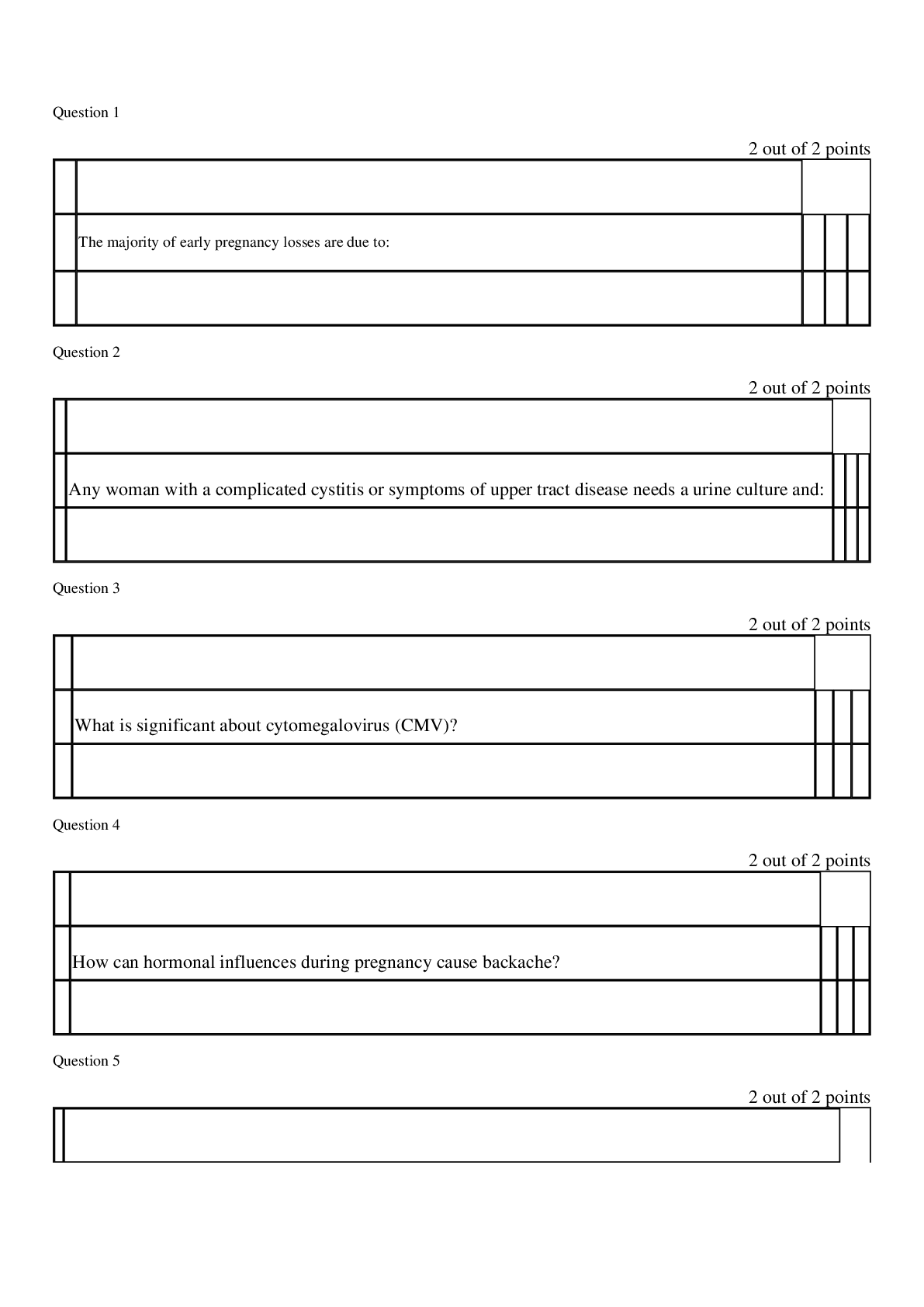Economics > STUDY GUIDE > UCI ECON / IS 13 HOMEWORK 2 . 100% GRADED. (All)
UCI ECON / IS 13 HOMEWORK 2 . 100% GRADED.
Document Content and Description Below
_d 1. The nation of Pineland forbids international trade. In Pineland, you can buy 1 pound of fish for 2 pounds of pineapples. In other countries, you can buy 1 pound of fish for 1.5 pounds of pineap... ples. These facts indicate that a. Pineland has a comparative advantage, relative to other countries, in producing fish. b. other countries have a comparative advantage, relative to Pineland, in producing pineapples. c. the price of pineapples in Pineland exceeds the world price of pineapples. d. if Pineland were to allow trade, it would import fish. _d 2. The price of sugar that prevails in international markets is called the a. export price of sugar. b. import price of sugar. c. comparative-advantage price of sugar. d. world price of sugar. a 3. If a country allows trade and, for a certain good, the domestic price without trade is lower than the world price, a. the country will be an exporter of the good. b. the country will be an importer of the good. c. the country will be neither an exporter nor an importer of the good. d. Additional information is needed about demand to determine whether the country will be an exporter of the good, an importer of the good, or neither. d 4. Assume, for Canada, that the domestic price of tomatoes without international trade is higher than the world price of tomatoes. This suggests that, in the production of tomatoes, lOMoARcPSD|1141657 a. Canada has a comparative advantage over other countries and Canada will export tomatoes. b. Canada has a comparative advantage over other countries and Canada will import tomatoes. c. other countries have a comparative advantage over Canada and Canada will export tomatoes. d. other countries have a comparative advantage over Canada and Canada will import tomatoes. _b 5. When a country that imported a particular good abandons a free-trade policy and adopts a notrade policy, a. producer surplus increases and total surplus increases in the market for that good. b. producer surplus increases and total surplus decreases in the market for that good. c. producer surplus decreases and total surplus increases in the market for that good. d. producer surplus decreases and total surplus decreases in the market for that good. [Show More]
Last updated: 2 years ago
Preview 1 out of 18 pages

Buy this document to get the full access instantly
Instant Download Access after purchase
Buy NowInstant download
We Accept:

Reviews( 0 )
$20.00
Can't find what you want? Try our AI powered Search
Document information
Connected school, study & course
About the document
Uploaded On
Oct 04, 2020
Number of pages
18
Written in
Additional information
This document has been written for:
Uploaded
Oct 04, 2020
Downloads
0
Views
52














